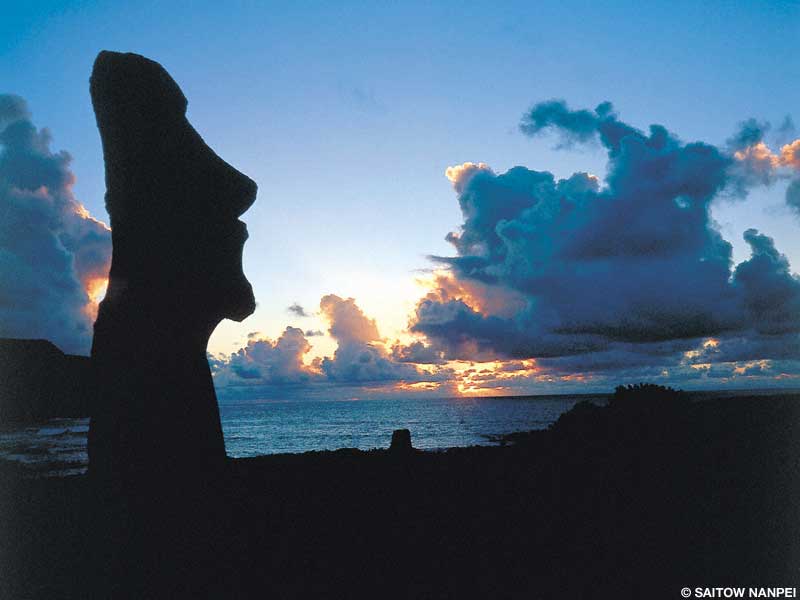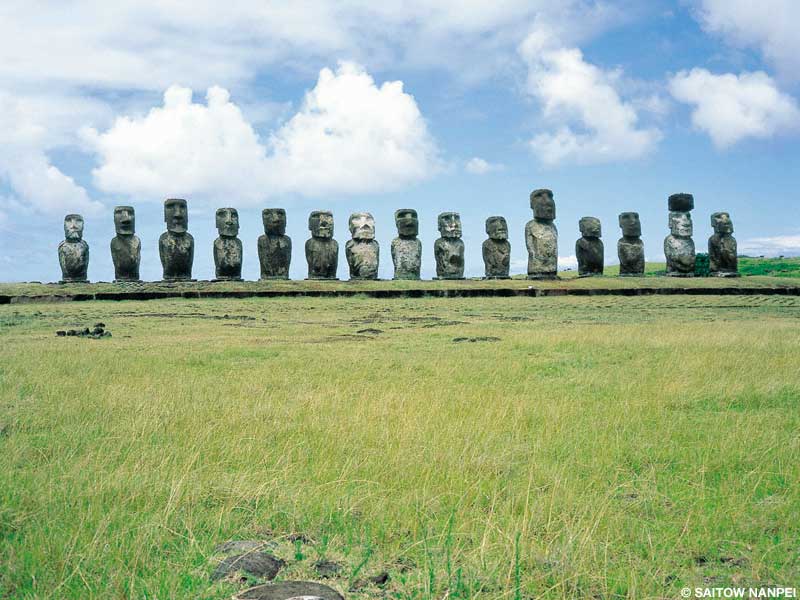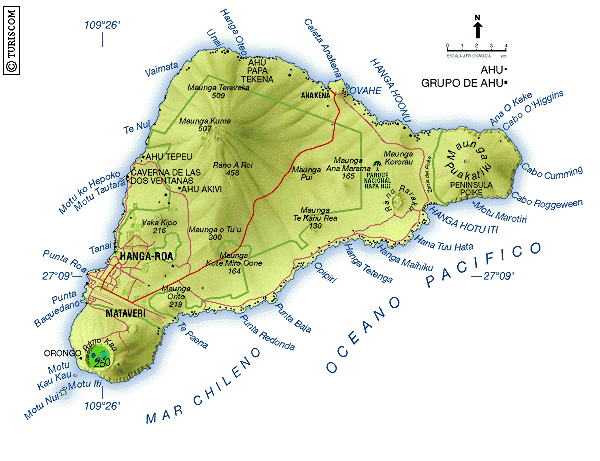





Easter Island is a destination that seems to inhabit our subconscious. ①The image
of those great stone moai with their backs to the vast Pacific strikes some chord within
us, recalls some ancient, creative urge. This is the world's most isolated bit of
land, a tiny pinprick in the great pacific, a mound of consolidated lava and ash from
three submarine volcanoes. The natives call their island Rapa Nui or Te Pito o Te Henua,
'the navel of the earth.'
Linguistic and cultural comparisons indicate that the first humans on Easter Island arrived
from the west, most likely from the Marquesas islands or Mangareva, as part of a greater
migratory process which spread Polynesian culture throughout the south Pacific. However,
the twelve centuries which elapsed between the arrival of the first intrepid 'settlers'
near 500 AD and the 'discovery' of the island in 1722 by the Dutch admiral Jacob Roggeveen
are among the world's great mysteries.
②European sailors visiting the island found that the natives could not explain the
construction and transport of the great moai megaliths, the largest of which exceeds
sixty feet in height.Nor could they decipher the rongo rongo tablets whose hieroglyphic
script appears to be a forgotten form of written language. Somewhere in the past -
a past which seems to have seesawed from ancestor worship, monument building and population
growth,to deforestation and food shortages, feuding and in some cases even cannibalism -
the old knowledge had been lost. It is the mystery of these disappeared artisans,and the
awesome presence of their works, which continues to draw scientists and seekers from across
the globe.
③Today, Rapa Nui National Park protects most of the island's archaeological sites,
and the native todomiro forests that once graced the island are being replanted.
Opportunities for hiking, mountain biking, and horseback riding abound on the island,
while a rich marine ecosystem of corals and colorful tropical fish makes Easter
Island a prime destination for scuba diving and snorkeling.